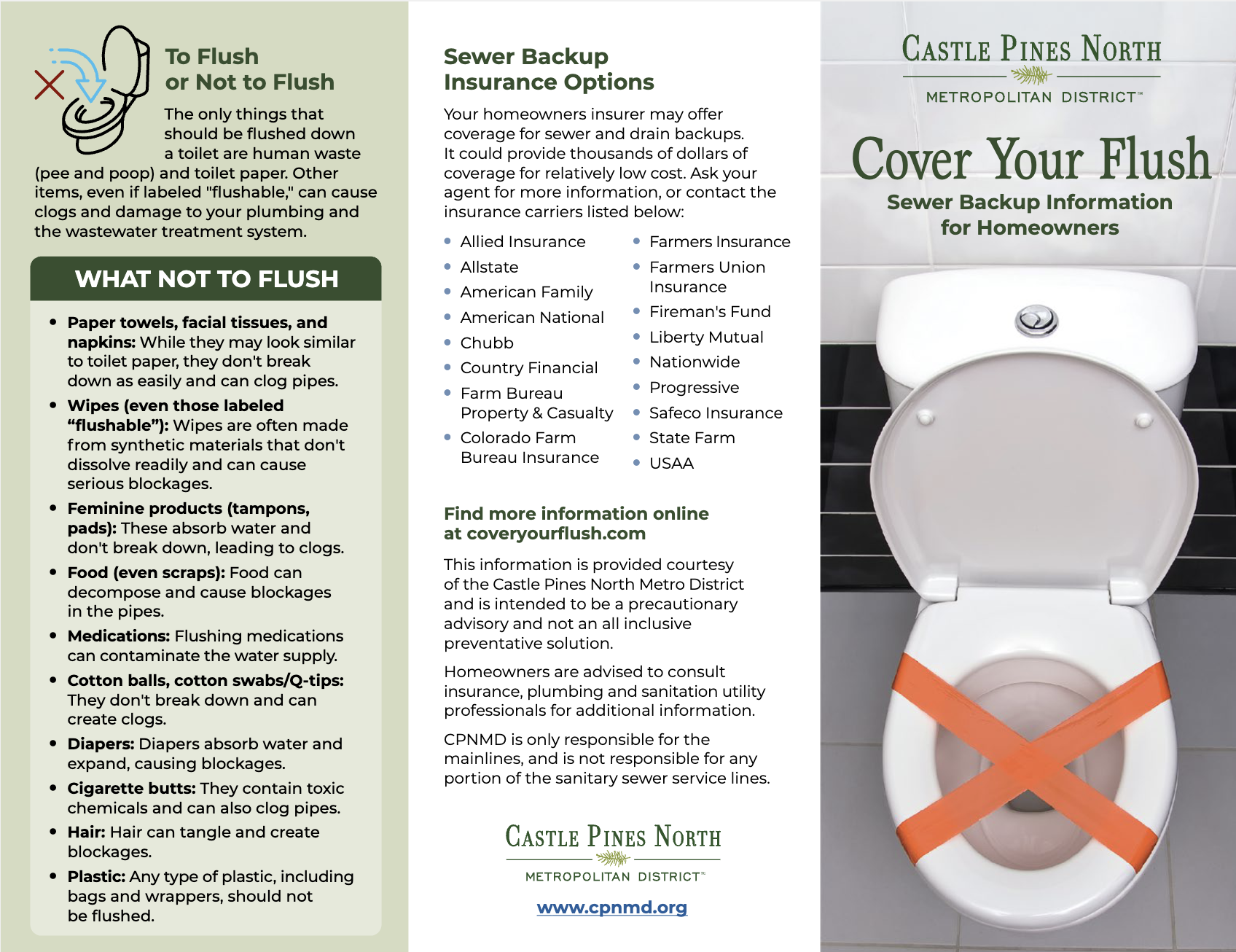Wastewater

Our Wastewater System
Wastewater, or sanitary sewage, flows from homes and businesses into a system of underground pipes. Every day, 500,000 gallons of wastewater in Castle Pines North are collected at our various pumping stations, and sent to the Plum Creek Water Reclamation Authority. Seven pumping stations or “lift stations”, powered by electric motors, help move wastewater through more than seven miles of the District’s sewer collection system.
See our wastewater rates here.
Plum Creek Water Reclamation Authority
Our wastewater is treated by the Plum Creek Water Reclamation Authority at their facility located south of Happy Canyon Road on Highway 85 (originally completed in 2005). PCWRA also treats wastewater flows from CPNMD, Castle Pines Village, and the Town of Castle Rock. Our monthly wastewater fees support the operation and maintenance of the facility, pay off loans for the plant's original completion and provide funding for future expansion as needed. Over a period of time, the District will contribute to around 10 percent of the total cost of an expansion project to increase treatment capacity.
Most treated effluent is used to irrigate The Ridge Golf Club. The remainder is released into East Plum Creek and eventually Chatfield Reservoir and the South Platte River.
Updates to Our Wastewater System
In 2008, a 16” force main line was installed to provide additional backup in the event of a break in one of the community’s main lines, to ensure uninterrupted service to customers.
We are also currently underway on a major project to improve seven of our eight wastewater lift stations, which move wastewater through our system to treatment. More information here.
Avoid Sewer Backups - Keep Your Sewer Line Clear
Property owners are solely responsible for sewer-line maintenance, repairs, and replacements between the home or commercial property and CPNMD’s main sewer line in the street. Improper disposal of certain items can lead to build-ups that restrict flows through sewer lines and cause blockages, backups and pump failures.
There are some simple ways to avoid or address a backup – including installing back-flow valves, using grease-fighting liquid dish soap and avoiding flushing clogging items like the following.
Read our Cover Your Flush handout and visit our page on avoiding/addressing sewer backups for more information.

